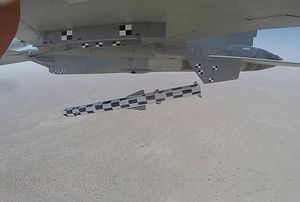The Indian government has reportedly decided to expedite the integration of the air-launched BrahMos-A supersonic cruise missile into Indian Air Force (IAF) Sukhoi Su-30MKI fighter aircraft under a new project, according to Indian media reports.
The decision to fast-track the BrahMos-A integration came six weeks after the Balakot air strikes and the ensuing India-Pakistan military standoff. During an internal review following the end of the military crisis, the IAF noted the lack of superior air defense systems and standoff air-to-surface strike capabilities within the service.
“In this context, the government decided to take a series of steps to bolster the IAF’s overall combat capability which included fast-tracking integration of Brahmos missiles into Sukhoi jets,” a government source was quoted as saying by The Economic Times.
The Indian Ministry of Defense (MoD), following consultations with the IAF, directed state-owned aircraft maker Hindustan Aeronautics Limited (HAL) and the Indo-Russian joint venture BrahMos Aerospace Private Limited (BAPL) to finish the program before a December 2020 deadline.
The BrahMos-A has an estimated operational range of around 400 kilometers and can be dropped from 500 to 14,000 meters (1,640 to 46,000 feet) by the Su-30MKI. The missile, named after the Brahmaputra River in India and the Moskva River in Russia, is an upgraded variant of the Russian-made P-800 Oniks over-the-horizon supersonic anti-ship cruise missile.
The BrahMos-A was first flight tested from a Sukhhoi Su-30 MKI fighter jet in November 2017 over the Bay of Bengal. The IAF last successfully test fired the BrahMos-A from a Sukhoi Su-30MKI fighter on May 22 as part of the BrahMos’ final developmental or certification trials, which reportedly include two certified launches against a naval and a ground target.
Following the successful completion of the trials, the BrahMos will be officially inducted into the IAF. As I reported earlier this year:
To date, two IAF Su-30 MKI fighters have been converted to launch the 2.5-ton supersonic air-to-surface cruise missile. The first time a Su-30 MKI took to the skies carrying a BrahMos-A occurred in 2016. As a result of the size and weight of the BrahMos-A, each Su-30 MKI can reportedly only carry one missile in a transport launch canister.
Overall, the IAF plans to stand up two Su-30 MKI squadrons armed with the new weapon system. As I reported previously, the IAF is purportedly already working on integrating the BrahMos-A on 40 Su-30 MKI fighters. Part of that integration process includes reinforcing the aircraft’s undercarriage and reportedly also hardened electronic circuitry to withstand the electromagnetic pulses of a nuclear blast — the missile is allegedly dual-capable and can carry a nuclear warhead, although there are no official plans by the Indian MoD to do so.
The twin-seater, twin-engine Su-30MKI, developed by Russian aircraft maker Sukhoi and license-built in India, constitutes the backbone of the IAF.
In 2016, the Indian government officially approved the integration of the BrahMos-A into the Su-30MKI with work officially kicking off by the end of 2017. The IAF plans for an arsenal of 200 BrahMos-A missiles.

































